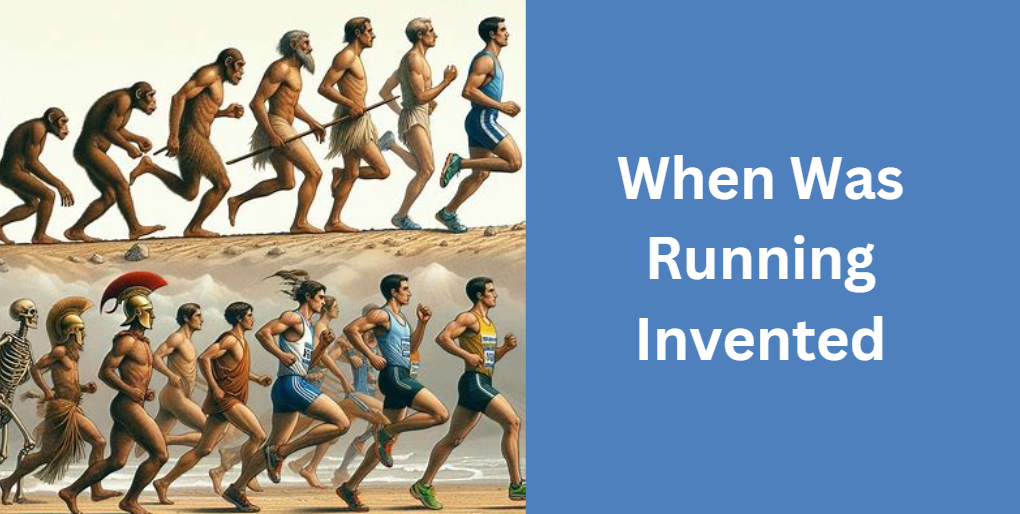Running is one of the most natural human activities, but when was running invented? The answer goes beyond competitive sports and marathons. Running has been an essential part of human survival since prehistoric times, helping early humans hunt, escape predators, and travel long distances. Over time, it transformed into a sport, a form of fitness, and even a cultural tradition across civilizations.
This article provides a detailed, easy-to-understand guide on the history of running, from its origins to modern-day competitions.
The Origins of Running: A Prehistoric Necessity
Running is believed to have originated millions of years ago as a fundamental survival skill for early humans. Fossil evidence suggests that Homo erectus, our early ancestors, had physical adaptations suited for endurance running. Their long legs, arched feet, and ability to sweat made them efficient runners compared to other primates.
One of the most fascinating theories regarding the origins of running is the Persistence Hunting Theory. This theory suggests that early humans used running as a method to chase prey until the animal collapsed from exhaustion. Unlike other predators that rely on short bursts of speed, humans could outlast their prey over long distances, giving them a survival advantage.
Did Early Humans Run Faster Than Us?
Ancient humans may not have been as fast as modern sprinters, but they had impressive endurance. Studies suggest that early humans could sustain speeds of 6–8 mph for long distances, making them one of the best endurance runners in the animal kingdom.
Running in Ancient Civilizations: From Survival to Sport
As human societies developed, running evolved from a survival mechanism into a structured activity. Several ancient civilizations incorporated running into their culture, either as a sport, military training, or religious ritual.
Running in Ancient Egypt and Mesopotamia
Historical records show that Egyptian pharaohs participated in endurance running events as a test of their strength. Similarly, in Mesopotamia, running was linked to military training, where messengers and warriors were required to cover long distances on foot.
The First Recorded Running Event in History
One of the earliest recorded running races dates back to 776 BC in ancient Greece, marking the beginning of the Olympic Games. The first and only event at these games was a short sprint called the “stadion”, a race covering approximately 180 meters. Over time, other race types were added, including longer distances and even races in full armor.
Ancient Greece: The Birthplace of Competitive Running
Ancient Greece played a significant role in formalizing running as a sport. The Greeks believed that physical fitness was essential for personal excellence, which led to the inclusion of running in their athletic competitions.
Popular Running Races in Ancient Greece
| Race Name | Distance | Description |
|---|---|---|
| Stadion | ~180m | A short sprint, the first Olympic event. |
| Diaulos | ~400m | Equivalent to a modern 400m sprint. |
| Dolichos | ~5km-8km | A long-distance race requiring endurance. |
Famous Greek runners such as Leonidas of Rhodes won multiple Olympic races, setting records that remained unmatched for centuries.
The Roman Influence: How Running Changed in the Empire
While the Romans admired Greek athletics, they were more focused on gladiatorial events and military training. Running became a crucial skill for Roman messengers and soldiers, who were trained to cover vast distances efficiently. However, the decline of the Roman Empire led to a decrease in organized running competitions.
Running in the Middle Ages: A Forgotten Sport?
During the medieval period, running was not a popular sport. Instead, it was mainly used for military purposes and communication. However, localized foot races emerged in Europe, where villagers would compete for entertainment. These early races laid the groundwork for modern track and field competitions.
The 19th Century: Running Becomes an Organized Sport
The 1800s marked the rebirth of running as a competitive sport. England played a crucial role in standardizing race distances and organizing athletic events. Schools and universities began including running in their physical education programs, and the first professional running clubs were formed.
The First Modern Olympic Marathon
In 1896, the first modern Olympic Games were held in Athens, Greece. One of the most iconic events was the marathon, inspired by the ancient legend of a Greek soldier running from Marathon to Athens to deliver news of victory. The official marathon distance was later standardized to 26.2 miles (42.195 km) in 1908.
The 20th Century: Running Becomes a Global Phenomenon
The 1900s saw the rise of legendary runners who shaped the sport. Athletes like Jesse Owens, Emil Zátopek, and Roger Bannister set records and revolutionized running techniques. The introduction of sports science and specialized training methods allowed runners to break new speed and endurance barriers.
During the 1970s, the running boom began, fueled by the growing interest in fitness. Jogging became popular worldwide, and running events such as the New York City Marathon attracted thousands of participants.
Running in the 21st Century: The Future of the Sport
Today, running is more popular than ever, with millions of people participating in marathons, trail runs, and ultra-endurance races. Advances in sports technology, such as carbon-fiber running shoes and GPS tracking, have further enhanced performance. The rise of virtual races and AI-powered training programs is shaping the future of running.
Frequently Asked Questions (FAQs) About When Was Running Invented?
How did early humans develop the ability to run long distances?
Early humans developed endurance running through natural selection. Traits like long legs, arched feet, and the ability to sweat efficiently helped them sustain long-distance running, making them successful hunters and travelers.
Were there any ancient rituals or ceremonies that involved running?
Yes, many ancient cultures included running in their religious ceremonies. For example, the Native American Hopi tribe performed long-distance running rituals as a form of spiritual practice, believing it connected them with their ancestors and nature.
Did different ancient civilizations have unique running techniques?
Yes, different civilizations developed their own running styles. The Greeks focused on short bursts of speed for Olympic races, while African tribes, such as the Tarahumara people, perfected ultra-distance running using a natural, barefoot technique.
How did footwear impact the evolution of running?
The earliest runners were barefoot or used primitive sandals made of leather or plant fibers. Over time, civilizations like the Romans developed more structured footwear, and modern technology eventually led to cushioned running shoes that enhanced performance and reduced injuries.
What role did women play in the history of running?
Historically, women were often excluded from competitive running events. However, ancient Sparta encouraged women to train in running for physical fitness. The breakthrough came in the 20th century when female athletes like Kathrine Switzer helped pioneer women’s participation in marathons and competitive racing.
Conclusion: A Timeless Human Activity
So, when was running invented? The answer is as old as humanity itself. Running has evolved from a prehistoric survival skill to a global sport enjoyed by millions. From the ancient Olympic Games to modern marathons, running has remained an essential part of human culture and fitness.
Whether for health, competition, or recreation, running continues to inspire people worldwide. The next time you go for a run, remember that you are part of a tradition that dates back thousands of years!
Read more posts like
OnlyFinder: The Ultimate Guide to Finding Creators Online
Harmonicode Sport: The Future of Athletic Performance & Biomechanics
Rinvoq Ruxience Copay Savings Card – Save on Your Prescription Costs
Clary Fisher: The Life, Career, and Influence of the Fashion Stylist
Biitland.com Stablecoins: The Ultimate Guide to Secure & Profitable Crypto Transactions


